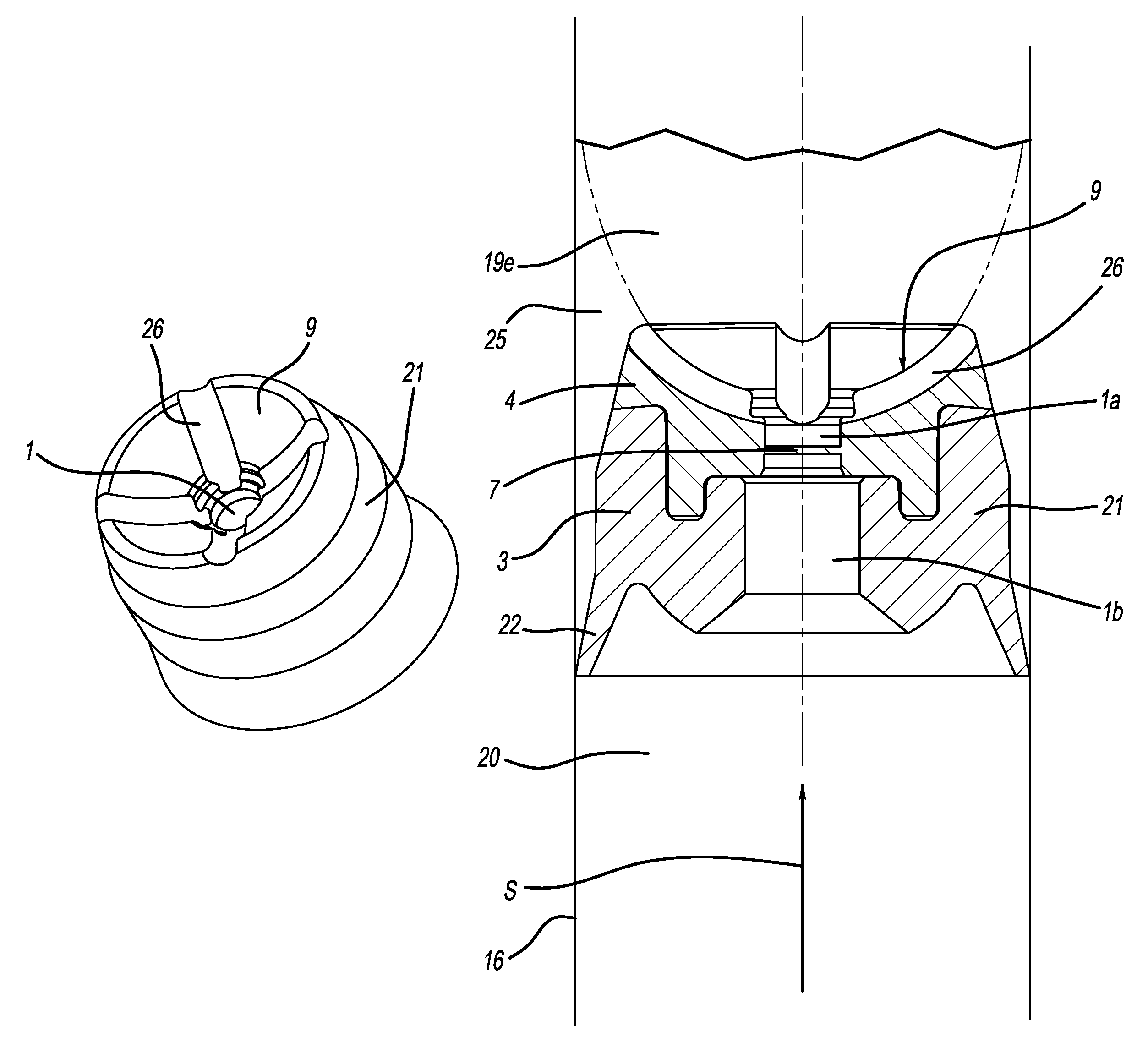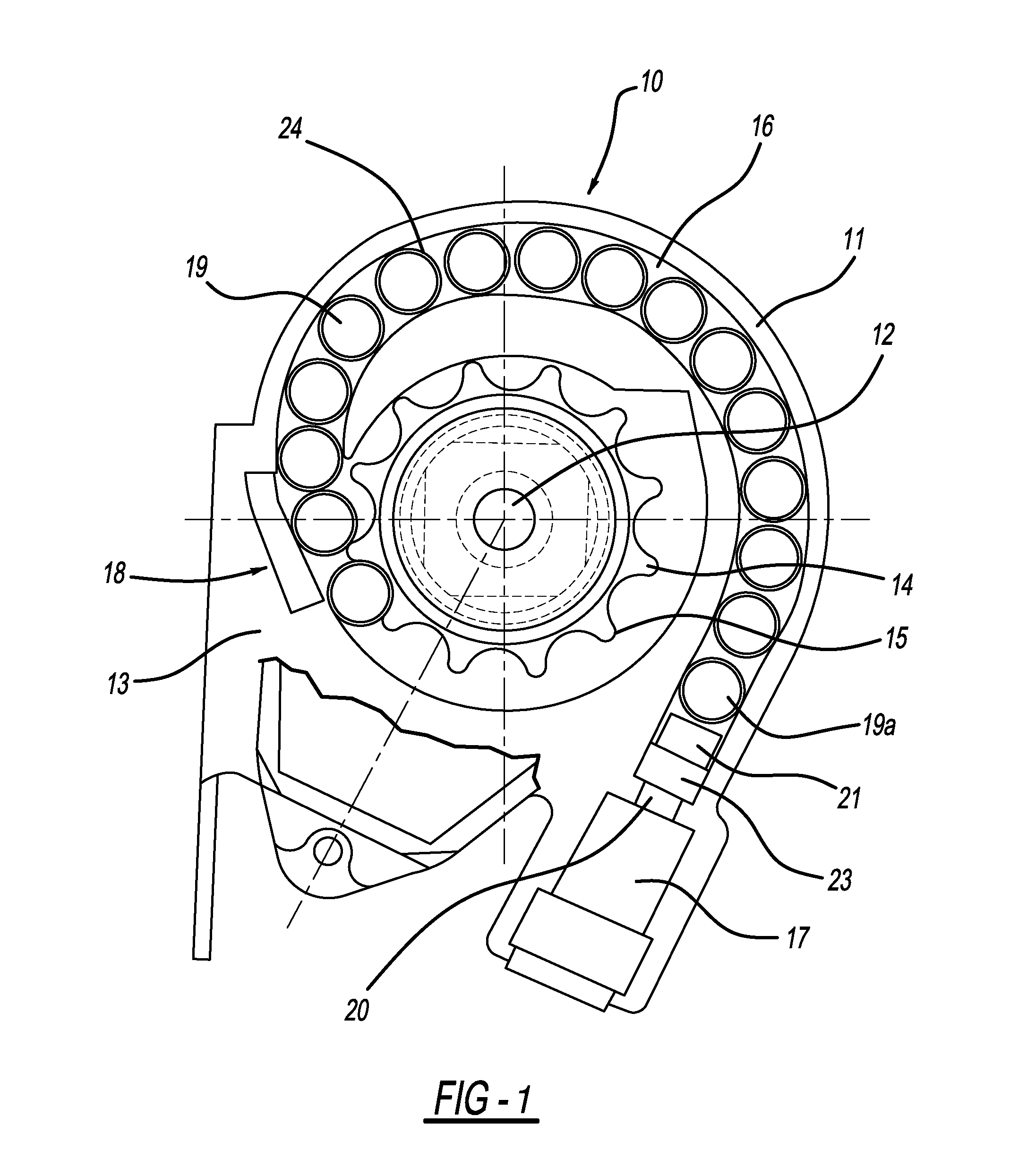Pretensioning device for a safety belt
a technology of pretensioning device and safety belt, which is applied in the direction of safety belt, pedestrian/occupant safety arrangement, vehicular safety arrangement, etc., can solve the problems of affecting the movement sequence of the pretensioning device, affecting the pressure relationship of the pretensioner tube produced by the gas of a pyrotechnic gas generator, and affecting the safety of the user
- Summary
- Abstract
- Description
- Claims
- Application Information
AI Technical Summary
Benefits of technology
Problems solved by technology
Method used
Image
Examples
Embodiment Construction
[0031]The belt retractor schematically shown in FIG. 1 comprises a housing 11 with a side leg 13, a belt coil shaft 12 placed thereon for a safety belt strap (not illustrated), and a pretensioning device 10 acting after release on the belt spool shaft 12. The pretensioning device 10 encompasses a drive wheel 14 connected in a rotationally fixed manner with the belt spool shaft 12 which, for example, features an external gearing 15, a gas generator 17, in particular pyrotechnic type, to produce a gas pressure, and a tube 16 connecting the gas generator 17 with the belt spool shaft 12 via a drive wheel 14. The tube 16 is formed by a tube wall 24 which can be part of the housing 11 or alternatively also a separate component part.
[0032]Provided in the tube 16 is a series of metallic ball-shaped inertia bodies 19 to convey the pretensioning movement caused by the gas pressure produced by the gas generator 17 to the belt spool shaft 12 via the drive wheel 14. The belt retractor is not lim...
PUM
 Login to View More
Login to View More Abstract
Description
Claims
Application Information
 Login to View More
Login to View More - R&D
- Intellectual Property
- Life Sciences
- Materials
- Tech Scout
- Unparalleled Data Quality
- Higher Quality Content
- 60% Fewer Hallucinations
Browse by: Latest US Patents, China's latest patents, Technical Efficacy Thesaurus, Application Domain, Technology Topic, Popular Technical Reports.
© 2025 PatSnap. All rights reserved.Legal|Privacy policy|Modern Slavery Act Transparency Statement|Sitemap|About US| Contact US: help@patsnap.com



